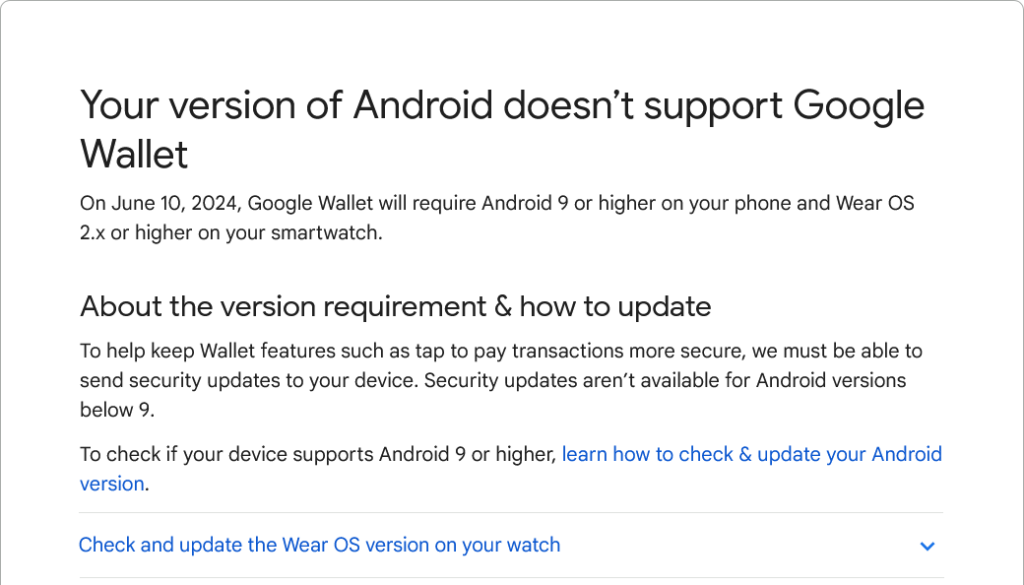Google Wallet is implementing significant compatibility requirements changes, discontinuing support for Android devices operating on Android 8.1 or earlier. This update represents a shift from the app’s previous compatibility with devices running on Android 7.0. Most Android users currently operate devices that run Android 9 or newer, suggesting that the impact of this update might be limited to a smaller segment of users. However, for those still using older devices, this shift signifies a critical limitation: the inability to use the Google Wallet app for tap-to-pay transactions.
This decision to phase out support for older Android versions in Google Wallet is primarily driven by pressing security concerns. Devices on older versions, specifically those earlier than Android 9, are no longer receiving security updates, exposing them to increased risks, particularly when storing and handling sensitive data such as bank and payment details. Google Wallet is known for its strict security measures, demonstrated by its incompatibility with even beta versions of Android, indicating a stringent policy of functioning only within highly secure environments.

It’s important to note that even some devices running Android 9 have ceased to receive security updates, though they generally boast better security than their predecessors. For individuals reliant on tap-to-pay services, upgrading to a newer smartphone is advisable. Alternatively, utilizing the contactless payment feature of physical debit or credit cards is another option, though it carries its risks, such as the potential for credit card skimmers.
For users affected by this update, considering an upgrade is more than just gaining new features; it’s a critical step towards ensuring the security of personal and financial information. The market offers a variety of newer Android models that not only support the latest software updates but also provide enhanced security features designed to safeguard user data.
In addition to device upgrades, users can also explore other digital payment methods that might still be supported on their devices. Apps like PayPal, Apple Pay (for iOS users), or bank-specific apps often provide similar functionalities and might have less stringent system requirements.
As prompted by Google Wallet’s latest update, the transition away from older technology aligns with a broader industry trend where software developers and tech companies are nudging users towards more modern, secure, and efficient systems. This evolution, while potentially inconvenient for some, ultimately benefits the larger user community by fostering a safer, more reliable digital payment ecosystem. This change serves as a reminder of the continuous cycle of technology, where staying updated is not just about keeping up with new trends but ensuring safety and functionality in an increasingly digital world.






